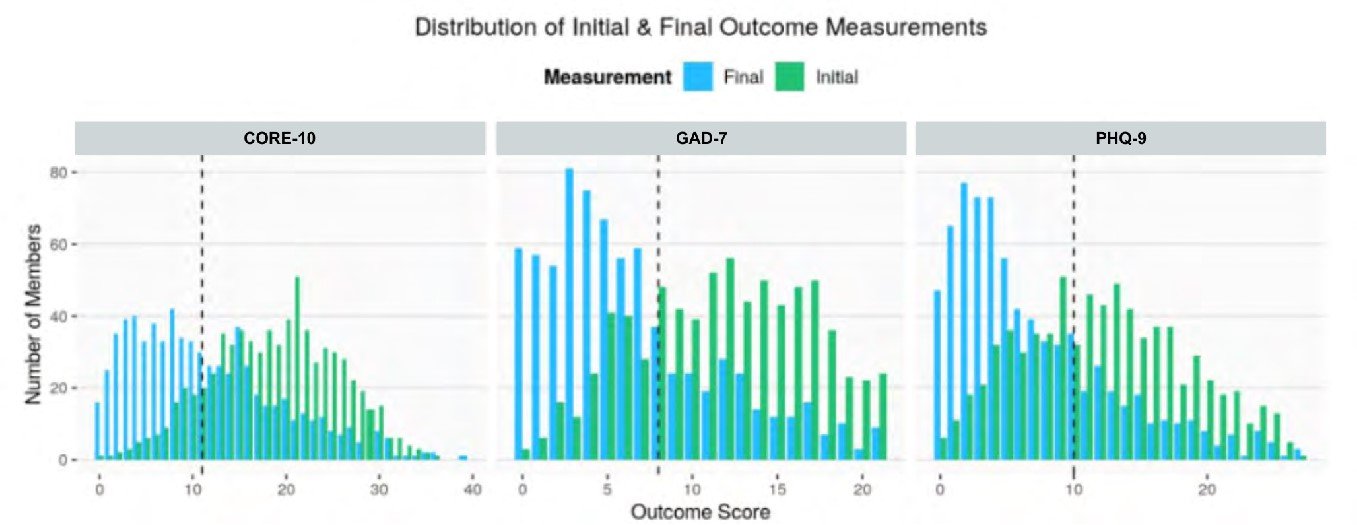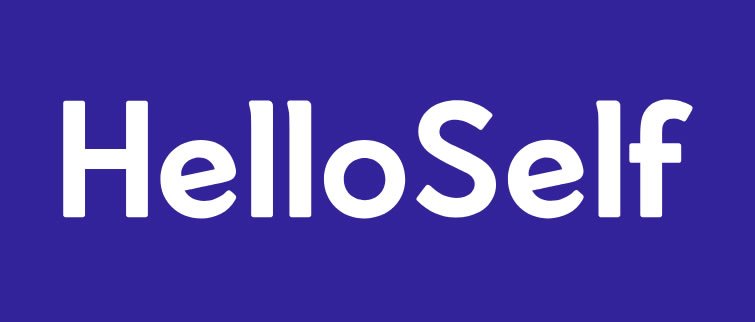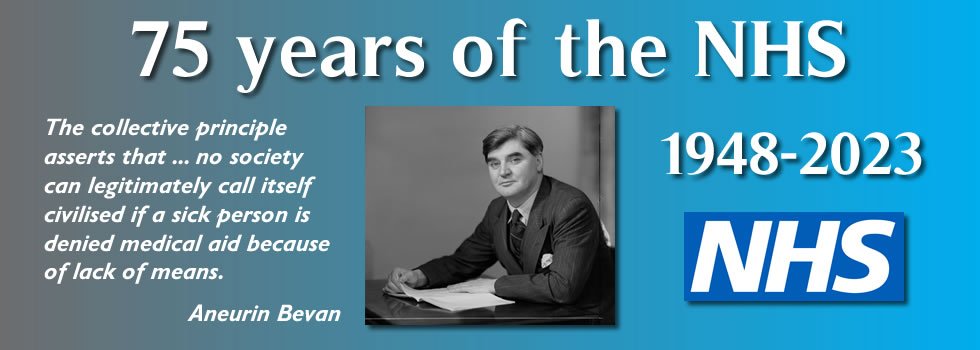How to supercharge talking therapy outcomes: Understanding the benefits of using technology and a digital platform as a clinician - Dr Lisa Debrou, Dr Rumina Taylor & Ben Pollard, HelloSelf
Introduction
The COVID-19 pandemic has led to a sharp rise in the need to rethink access to talking therapies. In the current climate the need for innovation within mental health has never been greater. Broader provision is needed to support NHS services and reduce the societal and occupational burden which occurs with poor emotional and psychological health. In 2021 over 4.3 million people were referred to mental health services in England (BMJ, 2022).
The last few years have also led to an unprecedented demand for technology-based therapy as people have changed and adjusted their lifestyle routines. This article outlines how HelloSelf, a private psychology clinic which delivers therapy through an app and digital platform, measures their outcomes. It will also provide an overview of how features on the platform can improve the therapeutic process.
The benefits of using technology for collection of outcomes
It is usual practice for psychological therapists to review how their clients are doing in therapy. Achieving improved clinical outcomes continues to be the gold-standard in psychological services. Clients want to make measurable progress and therapists want to understand what’s effective to help them build and deliver personalised treatment plans.
Challenges associated with collecting outcome data include relying on client feedback and clinician’s judgement, the use of manual data collection methods, therapy measures not being collected regularly or being missed and errors in scoring. As noted in the recent IAPT manual, therapy sometimes ends prior to treatment completion and clinicians can also forget (2021).
Furthermore, very few therapists working within private practice use formal outcome measures with only 37% indicating having used some sort of outcome assessment in practice (Hatfield & Ogles, 2004). This is despite it being well known that using outcome measures are incredibly helpful for the therapeutic process and for improving treatment.
Moreover, few private psychology clinics share their clinical outcomes, and this lack of transparency has been argued a disservice to clients (Clark et al., 2018). It does not allow people to make an informed decision about where to access help and it impacts their ability to understand themselves as well as they should. We also cannot start to look at trends and contribute to the knowledge base on the therapeutic process without data.
Technology has a vital role in helping address this problem as it can offer an effective solution to the outcome measurement issues described above. Technology can also support a range of outcome measures to be collected. For some clients, distress alleviation is an accurate measure of progress but for others, how they cope and manage their active symptoms is a goal and a meaningful measure of progress.
We also know that in some presentations, therapy involves an initial increase in distress in order to treat difficulties. Because of these variations, it is necessary to measure a variety of outcomes that matter to each client, irrespective of presentation, and technology can play a crucial role.
The digital platform
HelloSelf is a digital platform for the delivery and management of therapy sessions. For clinicians, the platform cuts the administrative burden of therapy by providing tools and shortcuts to reduce the time it takes to complete paperwork and records related to clients. The platform supports therapists to do their best work.
Anyone who uses the platform is offered the opportunity to complete regular standardised outcomes measures including the PHQ-9 (Kroenke et al., 2001), GAD-7 (Spitzer et al., 2006) and the Core 10 (Barkham et al., 2013). On the digital platform, clients and their therapist can track and monitor goals and outcomes they’re working towards and this allows for greater collaboration and transparency.
We believe this has been a major driver of our strong outcomes because it helps people see, understand, as well as feel their progress.
What is client engagement?
Client engagement can be defined as the amount of interaction between the user, or client, and the digital offering. Driving digital engagement is often a key focus in technology-based healthcare as it allows client behaviour to be observed so the service can be tailored more effectively. It includes everything in the digital journey of the client.
For example, completing a questionnaire on the platform, accessing an online psychoeducational resource, accessing the platform and communicating with the therapist through the platform are all examples of digital engagement. High levels of engagement in therapy tend to predict better patient outcomes (LeBeau et al., 2013; Orlinsky, Grawe, & Parks, 1994). The tools on the HelloSelf digital platform have been specifically designed to create engagement.
We wanted to understand the impact those tools were having on outcomes.
Clinical Outcomes
Out of a total sample of 759 clients, completing on average 13 sessions, 90.0%, 65.2%, and 63.2% scored above the clinical cut-off on the Core 10, GAD-7, and PHQ-9 respectively at assessment. Most commonly people fell within the moderate range on all three measures indicating likely cases of anxiety, depression, and general psychological distress (when using caseness criteria as noted in the IAPT manual v5, 2021). Of these, 57% were recovered at the end of treatment, with on average clients improving by 7.3, 4.3, and 5.2 points on the Core 10, GAD-7, and PHQ-9 respectively over the course of therapy (see Graphs 1- 3).
We found the majority realised enough improvements to symptoms and distress on these measures to move them to a lower classification on these measures. That is, for those initially above the clinical threshold on PHQ-9 (N=473), GAD-7 (N=487), and Core 10 (N=630), 76%, 80%, and 76% respectively had improved enough to move them to a lower scoring category at the end of treatment.

Graphs 1-3: Core 10, GAD-7, PHQ-9 distribution of initial and final outcomes
Client engagement
We also looked at client engagement (N=465) with the HelloSelf app and platform which was defined as the average number of completed activities per session. Activities included tracking a goal or outcome measure, interacting with their therapist in between sessions, recording sessions, tracking emotions or outcomes that mattered to the client.
We looked at the relationship between engagement and client improvement on the GAD-7 outcome measure for those scoring above the clinical cut-off at assessment. When controlling for baseline assessment scores and number of sessions, higher levels of engagement were correlated with a 45% improvement on the GAD-7 at week 15 compared to low engagement which was 32% (see Graph 4).

Graph 4: The relationship between digital engagement and GAD-7 score change
Summary
The purpose of this article was to highlight the benefits of technology in boosting therapy outcomes as well as noting the importance of client engagement. The aim was to show clinical evidence from HelloSelf that technology can ‘supercharge’ therapy by providing activities and data which is otherwise difficult for clinicians to collect. This supports the benefit of augmenting a traditional talk therapy model with engagement driving digital components rooted in psychological theory. It also informs which tools and tool types we should invest in for further developments.
Recommendations
- Clinicians may benefit from using a digital platform as an adjunct to talking therapy even if the sessions themselves are not conducted through the platform
- The use of technology to automate the collection of outcome measures may increase competition rates and saves valuable time for clinicians
- Further research is needed to understand how client engagement can be enhanced across therapies as there is clinical evidence that it relates to therapy outcomes
- Clinicians could trial certain engagement activities with clients. Activities which may be useful to trial include interaction with the therapist between sessions, setting and tracking goals, recording sessions and tracking emotions or outcomes of value.
References
- Barkham et al., (2013) the CORE-10: a short measure of psychological distress for routine use in the psychological therapies. Counselling and Psychotherapy research. 13(1): 3-13.
- British Medical Journal (2022). England saw record 4.3 million referrals to mental health services in 2021. Accessed online at: https://www.bmj.com/content/376/bmj.o672
- Clark, D.M., Canvin, L., Green, J., Layard, R., Pilling, S., & Janecka, M. (2018). Transparency about the outcomes of mental health services (IAPT approach): an analysis of public data. Lancet, 391: 679-686.
- Harkin, B. et al., (2016) Does monitoring goal progress promote goal attainment? A meta-analysis of the experimental evidence. Psychological Bulletin 142(2), p198-229.
- Hatfield, D. R. & Ogles, B. M (2004). The Use of Outcome Measures by Psychologists in Clinical Practice. Professional Psychology: Research and Practice, 35(5), 485–491.
- IAPT Manual (2021) Accessed online at The Improving Access to Psychological Therapies Manual | NHS England
- Kroenke, K., Spitzer, R.L., & Williams, J.B.W (2001). The PHQ-9 Validity of a brief depression severity measure. Journal of General Internal Medicine, 16, 606-613.
- LeBeau et al., 2013; Orlinsky, Grawe, & Parks, (1994). Homework compliance counts in cognitive-behavioral therapy. Cognitive Behaviour Therapy. 42(3), p171-9.
- Orlinsky, D. E., Grawe, K., & Parks, B. K. (1994). Process and outcome in psychotherapy: Noch einmal. In A. E. Bergin & S. L. Garfield (Eds.), Handbook of psychotherapy and behavior change (pp. 270–376). John Wiley & Sons.
- Spitzer et al., (2006). A brief measure for assessing generalised anxiety disorder: the GAD-7. Archives of Internal Medicine. 166(10) p1092-7.

Content provided by HelloSelf. For more information or to get in touch please contact This email address is being protected from spambots. You need JavaScript enabled to view it..








